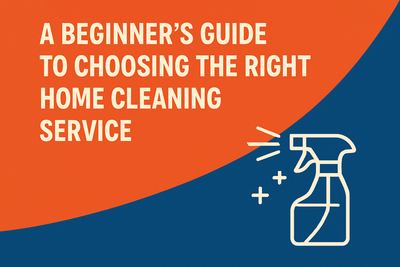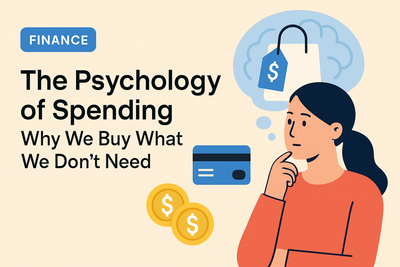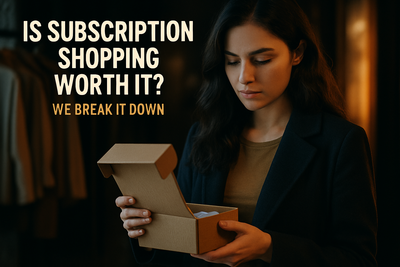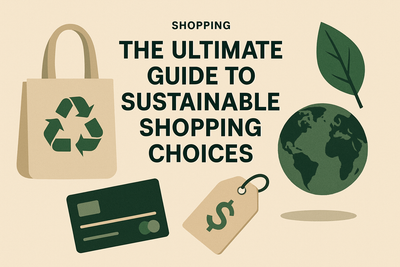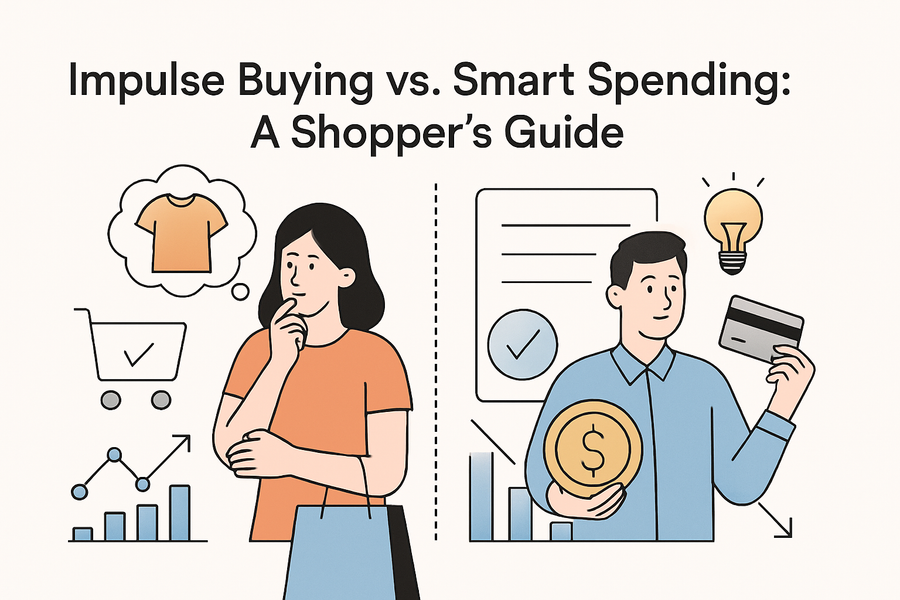
Introduction
We’ve all been there — walking into a store for one item and leaving with three bags of things we didn’t plan to buy. Impulse buying is common, driven by emotions, sales tactics, or simply the thrill of a new purchase. But over time, those small, spontaneous purchases can add up and chip away at your financial goals. In contrast, smart spending involves intentional decisions that maximize value and align with your long-term financial well-being. In this guide, we’ll explore the difference between impulse buying and smart spending, and offer actionable tips to help you become a more mindful shopper.
What Is Impulse Buying?
Impulse buying is the unplanned decision to purchase a product or service, made on the spot without prior intention. It’s usually driven by emotional triggers such as:
- Excitement or joy
- Stress or boredom
- Fear of missing out (FOMO)
- Sales promotions or limited-time offers
While one or two impulse buys may seem harmless, habitually giving in can disrupt your budget and lead to buyer’s remorse.
Understanding Smart Spending
Smart spending is about making deliberate, value-driven purchasing decisions. Smart shoppers:
- Plan purchases ahead of time
- Set and stick to budgets
- Compare prices and read reviews
- Buy based on needs, not emotions
- Look for quality and longevity over novelty
Smart spending doesn't mean never treating yourself — it means choosing when and how to indulge thoughtfully.
Signs You’re an Impulse Buyer
Not sure if you fall into the impulse-buying trap? Here are some telltale signs:
- Frequently shopping for emotional comfort
- Regretting purchases soon after buying
- Regularly exceeding your monthly spending budget
- Owning multiple unused or rarely used products
If any of these sound familiar, it might be time to shift gears toward smarter spending habits.
Tips to Curb Impulse Buying
Here are practical ways to resist the urge to buy on impulse:
- Create a Shopping List – Stick to a list when shopping to avoid unnecessary purchases.
- Set a Waiting Period – Wait 24–48 hours before making non-essential purchases.
- Unsubscribe from Retail Emails – Reduce exposure to tempting promotions.
- Track Your Spending – Use apps or journals to monitor where your money goes.
- Set Financial Goals – Having a savings target can motivate better spending choices.
Strategies for Smart Spending
Want to become a savvy shopper? Adopt these strategies:
- Research Before Buying – Read reviews, compare products, and evaluate alternatives.
- Set a Monthly Budget – Allocate specific amounts for categories like groceries, entertainment, and clothing.
- Use Cash Instead of Cards – Paying with cash can make the cost feel more real, helping to limit purchases.
- Invest in Quality – Choose durable, reliable products over cheaper, short-lived options.
Conclusion
Impulse buying might satisfy a short-term craving, but it rarely brings lasting satisfaction. By becoming aware of your shopping habits and embracing smart spending techniques, you can take control of your finances and shop with purpose. Remember, the smartest purchase is the one that adds value to your life without compromising your financial future. Happy (and mindful) shopping!

